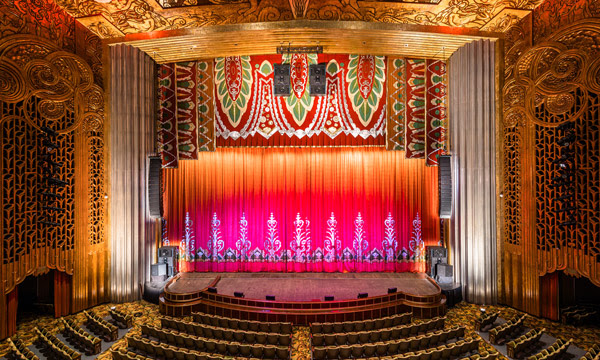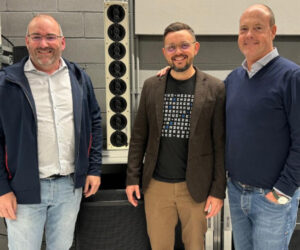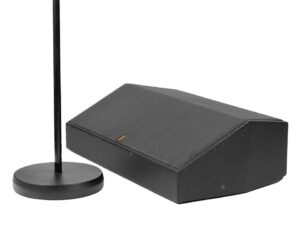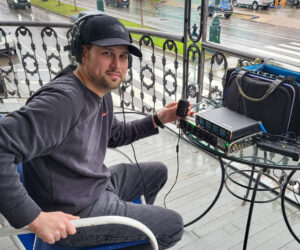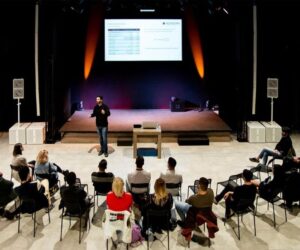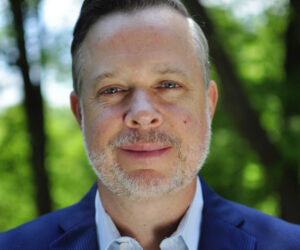Originally a movie palace when it opened in 1931, the historic Paramount Theatre in Oakland was restored in 1973 to serve as a concert hall, with the Art Deco interior painstakingly restored to its original state, and it recently received a sonic upgrade with a new sound reinforcement system headed by Meyer Sound loudspeakers and supporting components supplied and installed by Sound Image, a Clair Global Brand.
The now 3,040-seat venue has been awarded multiple historic designations, including that of a U.S. National Historic Landmark that assures the preservation of the theater’s visual aesthetics, but it raised challenges for the audio system renewal. To consult on the complexities involved, Paramount Theatre general manager Jason Blackwell turned to Berkeley-based The Shalleck Collaborative.
“Ian Hunter at Shalleck encouraged us to install delay speakers under the balcony,” says Blackwell. “But there was no way we could make it work effectively and affordably within the strict historic preservation guidelines. Ultimately, we had to put the building first.”
Hunter, a principal at Shalleck, adds, “We had to determine what size speaker system would be allowed, where we could hang it, and how to get uniform sound above and below the balcony. I was nervous about it, but the MAPP-3D models produced by Meyer Sound using LEOPARD showed it would be okay, and I have to say that in practice it’s better than okay. The arrays push under the balcony surprisingly well, with power and clarity.”
Hunter also prepared proposals based on comparable systems from two other manufacturers, but the final decision tilted toward the Meyer Sound approach based on array size, visual aesthetic, local support and meeting the approved budget.
The system as installed comprises dual front arrays of 14-each LEOPARD compact linear line array loudspeakers, with the top 12 the M80 version with an 80-degree horizontal pattern, and the bottom two with the standard 110-degree spread. Corner fills are, per side, one each UPQ-D1 and UPQ-D2 full-size loudspeakers, with six ULTRA-X20 compact wide coverage loudspeakers for front fill. Bass is supplied by four cardioid arrays of three-each 2100-LFC low-frequency control elements, with two arrays flown and two ground stacked. Eight MJF-210 low-profile stage monitors are available for artist foldback.
“For me, LEOPARD arrays were a ‘Goldilocks’ solution,” says Drew Johnson, assistant audio department head at Sound Image San Francisco and the on-site project leader. “Not too big, not too small, but with their 9-inch low-mid drivers they were just right. They are very directional and the way we have them angled throws to the back with very little reflection off the walls.”
The arrays are split into four zones to optimize the level and EQ for the vertical coverage areas. “We have plenty of power to fill the room without hitting the amps hard at all,” continues Johnson. “We have a lot of headroom, and the arrays achieve their high output without a lot of power draw.”
Two Galileo GALAXY 816 network platforms provide drive and optimization for the main arrays and corner fills via analog inputs, while the 2100-LFC elements and ULTRA-X20 loudspeakers connect for both audio and monitoring data via a Milan AVB network controlled by Nebra software.
Since installation, the new system has supported a range of musical genres, including performances by the two resident companies, the Oakland Symphony and Oakland Ballet, as well as Mexican singer-songwriter Lila Downs, K-pop act Loona, and comedy show Festival of Laughs. A sampling of future bookings ranges from kids’ shows (Blippi) to R&B/soul (Tony! Toni! Toné! and the O’Jays) and more comedy (Tina Fey and Amy Poehler).
“Right out of the gate, without tuning, I was impressed with the output of the system,” says Johnson. “Jason Blackwell requested we play some Louis Armstrong, and it came through with crisp, clear musical tone.”
Johnson returned a couple of weeks later to work as monitor tech for the Lila Downs concert. “Everything sounded great for the show,” he notes. “The FOH engineer was really happy, and the crowd was lit up. Personally, I was blown away by how well the cardioid subs worked. I could stand right behind them and still have a conversation.”
Blackwell, who cites the contributions of steward Kurt Dreyer and head audio engineer Sean McGuire for their input on the project, concludes, “Now we can handle any show that comes in so nobody has to pay for outside sound system rentals, especially with all the rigging labor expense. In the past, some shows would go elsewhere, and when some shows would bring in third-tier rental systems it would hurt our reputation. Now we can put all that behind us.
“I am confident that we put in a top-tier system and we will have full support from a great local company. I know they will be around whenever we need them.”
The complete audio renewal supplied by Sound Image also included a Yamaha CL5 and CL3 consoles (FOH and monitor respectively) and four additional Shure Axient wireless systems.


